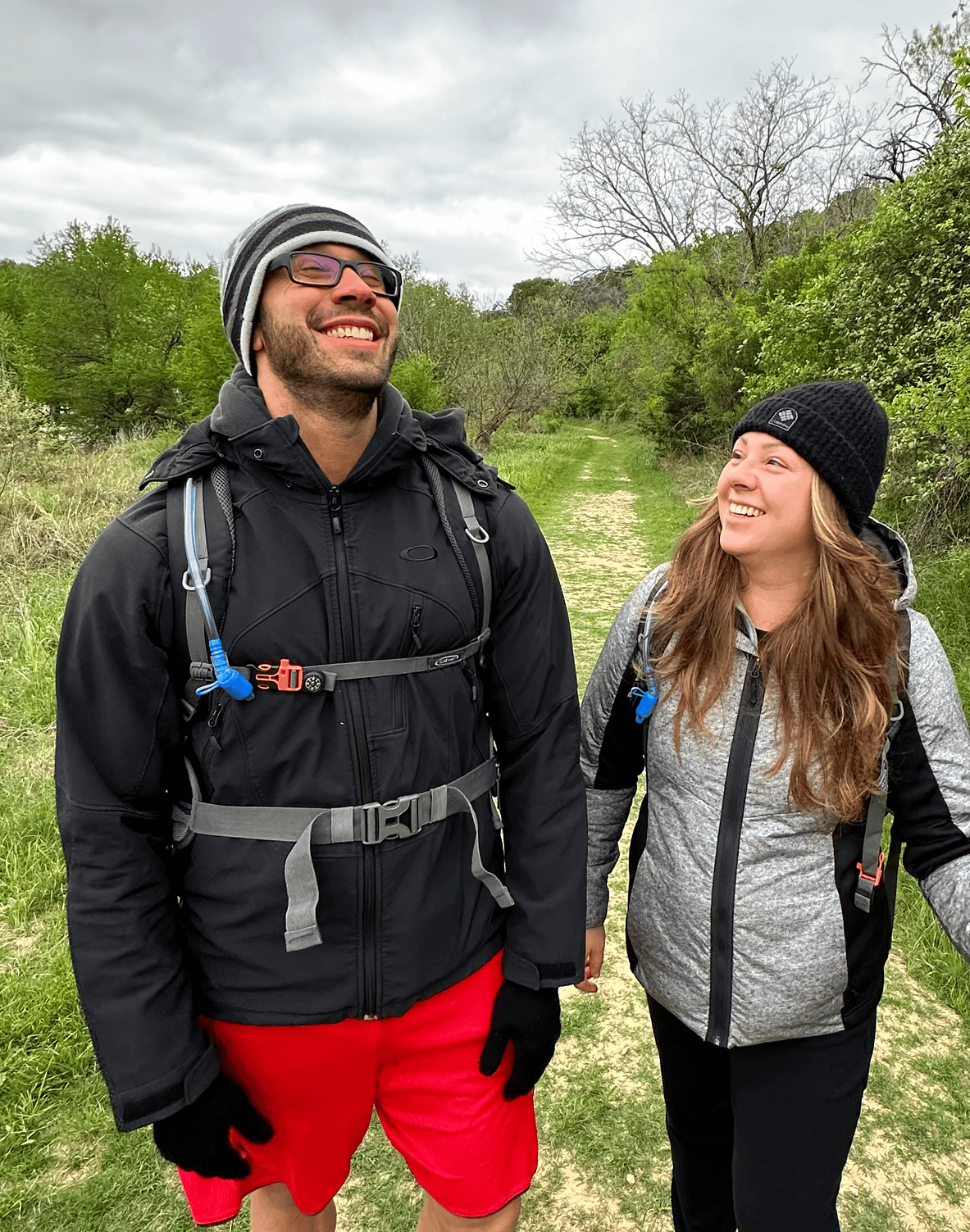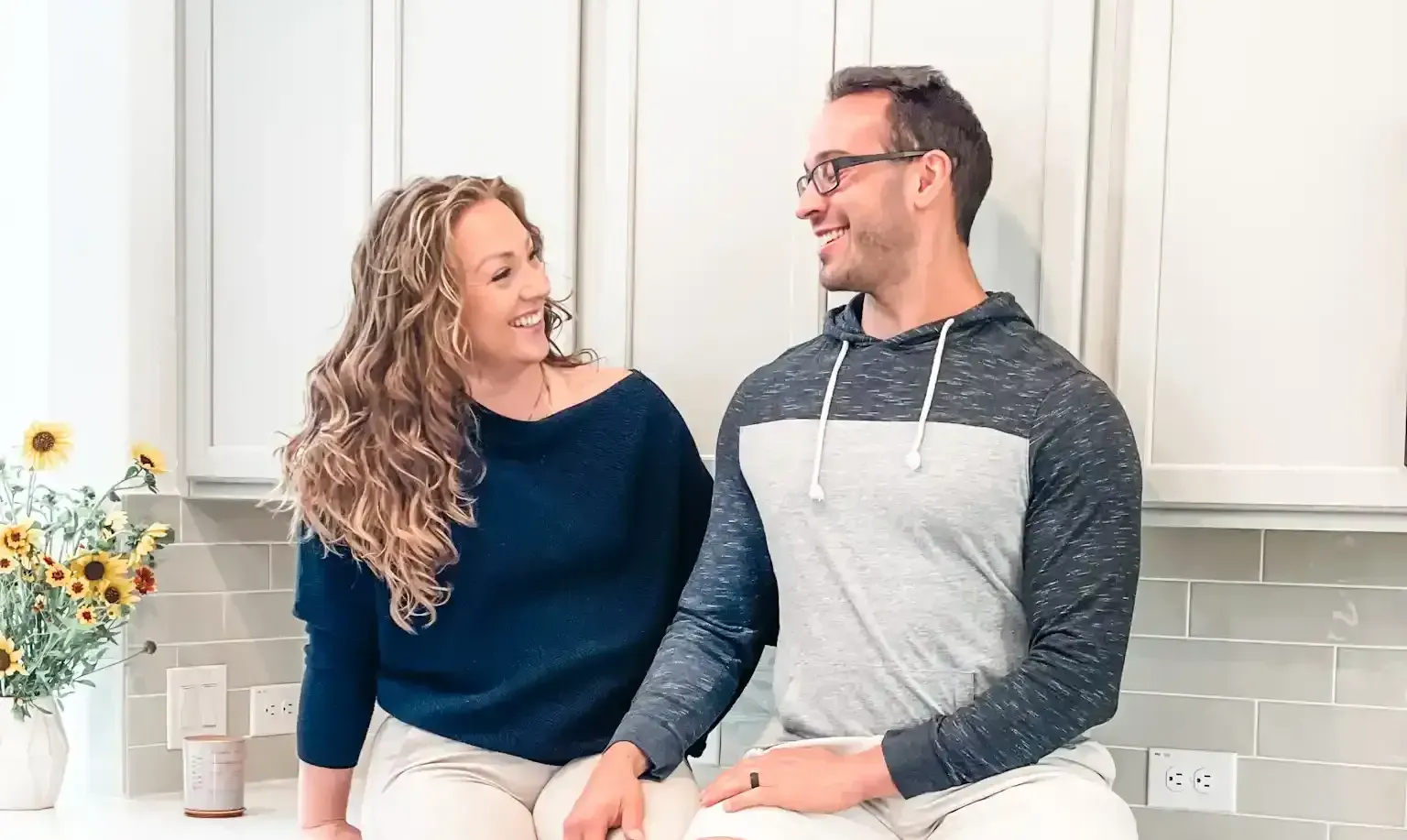SEO for Creators: How to Get Found Without Posting Daily
TL;DR:
Tired of the burnout cycle from constant posting?
This guide shows how creators can use SEO to build visibility, drive leads, and grow sustainably. Without being at the mercy of social media algorithms.
You’ll learn how to:
- Use SEO to attract high-intent traffic and build evergreen content
- Identify the right keywords and search intent for your ideal audience
- Write blog posts that convert and repurpose them into 10+ content pieces
- Set up a simple funnel with a lead magnet, nurture emails, and internal links
- Earn backlinks to boost rankings and build long-term authority
Introduction
If you’ve built your business on social media, you’ve probably felt it:
- The pressure to keep showing up.
- The guilt that comes with taking a break.
- The fear that if you don’t post, you’ll disappear.
This constant cycle of content creation isn’t sustainable. And here’s the truth:
You don’t need to post daily to be discoverable.
You just need SEO strategy; for your website that is. Don't have one yet? Come talk with us.
Search Engine Optimization isn’t some techy, complicated process that only big brands use. It’s a quiet system that works behind the scenes to get your content in front of your target audience who are actively searching for it.
And the best part? Once it’s set up, it keeps working while you rest.
I learned this the hard way.
When I was running my fitness coaching business, everything depended on social media.
My marketing strategy was to post daily, follow trends, and engage in the DMs. And it worked. Until it didn’t.
When burnout hit and I stepped away from posting, the DMs stopped. Engagement disappeared. Leads dried up. Sales vanished. My business didn’t slow down, it collapsed.
Not because my offer wasn’t good. But because I had built everything on borrowed attention.
The moment I stopped posting, my visibility disappeared. That experience forced me to rethink everything. I realized I didn’t have a true business. I had an audience I didn’t own.
That’s when I discovered SEO, email marketing, and funnel strategy. I moved on from my fitness coaching business to build SEO systems for local service businesses like landscaping, concrete, and electrical.
These systems bring in leads while the business focuses on delivering services.
Now, I do the same for creators because I don't want to see more creators burn out from social media and stop offering their products or services to the world.
In this guide, we’re breaking down exactly how you, as a creator, can use SEO strategy for your website to get found online without being glued to your phone or riding the algorithm rollercoaster.

Why Creators Need SEO Now More Than Ever
Burnout is Real
Let’s be honest: the content treadmill isn’t sustainable. You might love what you do, but loving your craft doesn’t mean you need to run your business like an always-on content machine.
The constant pressure to post engaging content daily, show up on every platform, and stay relevant is exhausting.
And it’s not just physical burnout. It’s creative burnout. Mental fatigue. Emotional detachment.
The Myth of Visibility = Effort
Social platforms have trained us to believe that the more you post, the more successful you’ll be. But the algorithm doesn’t reward value...it rewards volume and consistency. That means even your most valuable content can go unseen if it’s not served at the right time in the right format.
Meanwhile, creators who post something forgettable every day can outperform you in reach.
It’s not fair, and it’s not your fault. But there’s another way.
SEO Offers Leverage
Unlike social media posts that disappear within 24–48 hours, SEO allows your content to live and work long-term.
One relevant blog post ranking for the right keywords can bring traffic for months or years after you hit publish.
This is how creators stop working harder and start working smarter.
What SEO Actually Is (In Plain Language)
SEO stands for Search Engine Optimization.
It means structuring your content in a way that helps it show up in search engine results...Google, YouTube, Pinterest, even podcast platforms.
Here’s what SEO is not:
- Coding
- Keyword stuffing
- Tech wizardry
Here’s what SEO is:
- Answering real questions your ideal audience is already Googling
- Finding relevant keywords that your target audience types into search engines
- Structuring your blog, site, or landing page to help search engines understand it
- Creating valuable content that lives longer than a social media post

What SEO Can Do for Creators (Show Up in Google Search!)
Show Up for High Search Intent Traffic
People on Google are searching for answers. They’re not mindlessly scrolling. That means when someone finds your blog post, they’re already interested in what you offer.
SEO helps you meet people exactly when they’re looking for someone like you.
Drive Qualified Leads to Your Website
Unlike social media where your CTA might get buried in the noise, SEO content points people directly to your site, your offer, and your freebie. Your visibility becomes focused and intentional, not scattered and algorithm-dependent.

Turn Your Content into Evergreen Assets
That Instagram post from last month? Forgotten. That blog post from last year? Still ranking in search results.
With SEO, your blog posts, resources, and freebies become long-term tools that keep working even when you’re not.
Work While You Rest (Or Play)
You can take a break from posting. You can go on vacation. You can log off. And guess what? Your content still works.
Because SEO isn’t about showing up daily, it’s about building something that keeps showing up for you.

What You Need Before You Start
You don’t need a perfect brand or a complex funnel to start. You just need a few basics.
A Clear Offer
What problem do you solve? Who do you help? If your offer is unclear, your content will confuse people (and confuse search engines). Start here.
A Simple Website or Blog
You don’t need a fancy site. You just need a place to publish content—whether that’s a WordPress blog, a Duda site, a Squarespace page, or Showit.
A Basic Understanding of Your ICA's Language
What are they typing into Google when they need help? What phrases do they use? This is the foundation of your keyword strategy.
Optional: A Lead Magnet or Email List
Once traffic starts flowing to your content, you want a way to capture it. A free guide, checklist, or quiz connected to an email form helps you turn visitors into leads.
SEO Basics (Without the Tech Headache)
You don’t need to be technical to make SEO work for your business. You just need to know what people are searching for, and how to write content that helps them.
1. Keywords: What They Are and How to Find Them
Keywords are the bridge between your content and the people looking for it.
Let’s say you’re a podcast launch coach. Your ICA (ideal client avatar) might search:
- “how to launch a podcast”
- “best podcast gear for beginners”
- “affordable podcast coaching”
Those are keywords. They tell you exactly what content to create.
Use these tools to perform keyword research find them:
- Google Autocomplete: Start typing your topic, and let Google finish the sentence.
- Ubersuggest: See search volume, keyword difficulty, and related ideas.
- Answer the Public: Find real questions people ask, like “Should I launch a podcast on Spotify or Apple?”
- Google Keyword Planner: See trends and compare options.
Use long-tail keywords for better results for your blog posts. Instead of targeting “podcast,” go for:
- “how to start a podcast for therapists”
- “podcast content plan for busy moms”
Longer keywords are easier to rank for and more likely to bring the right people.
2. Search Intent: Why it Matters More than Search Volume
Let’s say 10,000 people search for “best content strategy,” and 300 search for “how to write an SEO blog post as a coach.”
They're both relevant keywords, but which one is better?
Answer: The second. Because it’s more specific, and the person searching is more likely to need exactly what you offer.
Informational keywords: “How to set up email marketing” → great for top-of-funnel blogs.
Transactional keywords: “Best SEO tools for creators” → great for affiliate content, service pages, or list-style posts that build purchase intent.

3. Where to Use Keywords
Strategic placement beats repetition. Use your target keywords naturally in places like:
- Blog title: “How to Build an Evergreen Funnel Without Posting Daily”
- Meta description: “A non-technical guide for creators who want to grow with SEO instead of social media burnout.”
- Headers: Break content into clear, scannable sections (like these).
- URL slug: yourwebsite.com/seo-for-creators
- First paragraph: Google and all search engines want confirmation early.
- Descriptive alt text for images: “SEO blog post checklist for content creators.”
Use keywords where they fit. But write for humans first—always.
What to Write About (Even If You Hate Blogging)
Here’s the truth: Blogging doesn’t have to be academic, stuffy, or SEO-perfect to be effective. It just has to be helpful and share a little about your personal experience.
Start With What You Already Know
Instead of brainstorming from scratch, reverse-engineer your own process.
- FAQs you get in DMs
“How long does SEO take?” → That’s a blog post. - Sales objections
“I’m not techy enough to do SEO.” → Another post. - Call stories
“Here’s how one client grew her traffic with one blog post.” - Repeat client lessons
“3 mistakes new creators make with content strategy.”
If you’ve said it more than twice, you should probably write it down once.
Content Ideas that Rank and Convert
- How-to guides: How to build a podcast funnel in 7 days
- Tool roundups: Best SEO tools for coaches in 2025
- Mistakes lists: Avoid these 5 creator SEO traps
- Personal insights: How blogging saved my business from burnout
- Comparisons: ConvertKit vs Flodesk for content creators
- Results breakdowns: What happened when a blog post brought in 300 leads
Still stuck?
Pick your top 3 services or offers. Now write one blog for each that answers a key question a prospect might type into a search engine. That’s a great place to start.
Pro tip: Avoid keyword stuffing. In other words, don't try to load as many keywords as possible in your post. Google might rank it, but your target audience won't read it.

How to Turn 1 Blog Post Into 10 Pieces of Content
This is where the real magic happens. SEO isn’t just about traffic, it’s about efficiency. One blog post can turn into weeks (even months) of engaging content across platforms if you know how to break it down and repurpose strategically.
Here’s how to multiply one blog post into ten high-value assets, and how to actually create each one:
1. Instagram or LinkedIn Carousel Posts
How to make it:
- Open your blog and pull the main sections or tips. Use each as one slide.
- Start with a bold hook on Slide 1 (e.g. “Burned out from posting daily? Read this.”)
- Use clear headers, minimal text, and bold visuals on each slide.
- End with a CTA like “Save this,” “DM me for the checklist,” or “Read the full blog. Link in bio.”
Tools to use: Canva, Adobe Express, or InDesign
Pro tip: Use your blog’s H2 subheadings as slide titles. This makes it fast and easy.
2. Instagram, LinkedIn, or YouTube Shorts Reel
How to make it:
- Record a 30–60 second "talking head" clip.
- Start with a hook: “Here’s how one blog post can save you from social media burnout.”
- Share 1–2 key takeaways or tips from the blog post.
- Add on-screen text that highlights the points you’re making.
- End with a soft CTA: “Want the full breakdown? It’s on the blog. Link in bio.”
Tools to use: Instagram app, CapCut for editing
Pro tip: Film in a quiet, well-lit room. Keep your face centered and your message clear.
3. Newsletter
How to make it:
- Start your email with the blog’s intro or a personal story.
- Follow with 1 core insight, framed as a takeaway your audience can use today.
- Link to the full post for those who want the deep dive.
- Add a P.S. with a soft CTA to your lead magnet or service.
Structure example:
- Subject: “What I learned when my content stopped working”
- Body: Short story → SEO insight → blog link → invitation to reply
- CTA: “Click here to read the full blog on how to use SEO to get found without posting daily.”
Tools to use: ConvertKit, MailerLite, Flodesk
Pro tip: Make it feel like a 1:1 email, not a company blast.
4. LinkedIn Post
How to make it:
- Pull the “problem → solution” arc from the blog.
- Share the story of burnout (or another personal insight) in 2–3 short paragraphs.
- Follow it with a bulleted list of SEO tips.
- End with a call to engage: “What’s one blog post you could repurpose today?”
Formatting example:
- Hook: Burnout almost shut down my business.
- Story: I was posting daily until everything stopped working.
- Pivot: Here’s what saved me: SEO.
- List: 3 things I did differently
- CTA: Drop a 👍 if this helped. Or, DM me for the checklist I used.
Tools to use: Native LinkedIn editor
Pro tip: Break up your post with white space to improve readability.
5. Podcast Outline
How to make it:
- Open your blog and turn each section into a bullet point.
- Add a quick anecdote under each point to keep it personal and conversational.
- Title your episode based on your blog headline (e.g. “How I Use SEO to Avoid Daily Posting on Social Media”).
Structure example:
- Intro: My burnout story
- Section 1: Why SEO matters for creators
- Section 2: What SEO really is (no tech needed)
- Section 3: How to build your funnel
- Outro: One small step to take today
Tools to use: Google Docs + Notion for outlining
Pro tip:
Record your podcast with minimal editing. Authentic > perfect.
6. YouTube Video
How to make it:
- Use your blog as a loose script. Don’t read it, teach from it.
- Start your video with a personal story, just like the blog.
- Use visuals (slides, screen recordings, or B-roll) to make it engaging.
- End with a link to the blog and/or a free download.
Structure example:
- Hook (0:00–0:30): “What happens when you stop posting daily? Let’s talk.”
- Teach (0:30–4:00): Cover 3–5 blog tips, show examples
- CTA (4:00–5:00): “Grab the full checklist at the link below.”
Tools to use: Loom, iMovie, ScreenFlow, or Descript
Pro tip: Repurpose this video audio into a podcast later!
7. Pinterest Pin
How to make it:
- Create 2–3 pin graphics that lead to the blog.
- Each graphic should highlight a key benefit:
“5 SEO tips for creators who hate social media”
“Get found without posting daily”
Include:
- A bold, clear headline
- Your URL or handle
- A vertical format (2:3 ratio)
Tools to use: Canva, Tailwind
Pro tip:
Link directly to the blog URL. Use keywords in your pin title and description for Pinterest SEO.
8. Lead Magnet
How to make it:
- Turn the blog’s checklist or step-by-step framework into a short PDF download.
- Add a branded cover page, a clean layout, and 1–2 fill-in sections if possible.
- Gate it behind a signup form on your site.
Example titles:
- “SEO Starter Kit for Creators”
- “10 Evergreen Content Prompts to Save You From Daily Posting”
Tools to use: Canva, Google Docs → PDF, ConvertKit or Systeme.io for delivery
Pro tip: Add the opt-in form to the blog post to make it work as a funnel.
9. Workshop Slide Deck
How to make it:
- Use each blog section as 1 slide (or slide group).
- Add examples, stats, or screenshots to support each concept.
- Open with your story and end with a call to action.
Example Structure:
- Slide 1: Title + subtitle
- Slide 2: Creator burnout is real (your personal story goes here)
- Slides 3–10: Each SEO lesson from the blog
- Slide 11: CTA: Join your list or book a call
Tools to use: Google Slides, Keynote, or Canva
Pro tip: Run it as a live webinar, or record it as a video training for evergreen use.
10. Evergreen Instagram Story
How to make it:
- Break your blog into a 4–7 panel story sequence.
- Use 1 idea per slide with background images or branded graphics.
- Include engagement tools:
- A poll: “Are you tired of posting daily?”
- A quiz: “Is your content SEO-optimized?”
- A CTA: “DM me a ✔️ for the checklist” or “Link in bio for the full post”
Tools to use: Canva for Stories, or IG native text slides
Pro tip: Save the sequence to a highlight called “SEO Tips” or “Evergreen Tips” so new followers can see it anytime.

How to Build a Simple
SEO Funnel

SEO by itself is powerful. But when paired with a funnel, it becomes unstoppable.
Step 1: Write a Blog Post that Solves a Real Problem
Not just any blog. A problem-aware, solution-offering post that directly addresses a question your ICA is Googling.
Examples: “How to Start Email Marketing for Personal Brands” or "How to Implement SEO for Higher Search Rankings"
Step 2: Embed a Lead Magnet or Free Resource
Your blog should gently say: “If you liked this, you’ll love this free guide.”
Embed your freebie:
- Inline (mid-post)
- At the end
- As a scroll popup
- Inside your author bio
Example: “Grab the free SEO Starter Checklist for Coaches”
Step 3: Link to Related Posts or Service Pages (Internal Linking)
Keep people moving through your world by linking amongst your website pages:
- Blog → blog
- Blog → service
- Blog → lead magnet
- Blog → sales page
Google sees this as topical authority. Users see it as helpful.
Step 4: Connect an Opt-In Form to Your Email Sequence
Set up an automated series of 5–7 emails to:
- Deliver the freebie
- Introduce you and your work
- Offer another resource
- Share a client win
- Pitch your service
Make it feel like a warm, welcome coffee chat. Not a sales funnel.
Step 5: Automate Your Nurture Emails
Use tools like:
- ConvertKit
- MailerLite
- Flodesk
- Systeme.io
Segment by interest or offer. Keep it personal and evergreen.

How to Build Backlinks That Boost Your Rankings
Now that you’ve written a helpful blog post and structured it for search, you need one more ingredient to accelerate your results: backlinks.
What is a Backlink?
A backlink is when another website links to yours.
Think of it like a vote of confidence. When other websites that are reputable link to your content, Google and other search engines see it as a signal that your content is trustworthy and valuable. The more high quality links you earn, the more likely your website and blog will rank higher in search results.
Remember, not all backlinks are created equal. Quality matters more than quantity.
What Makes a Backlink Valuable?
- It’s from a site with strong authority (e.g., a reputable blog, podcast, or industry publication)
- It’s relevant to your niche (e.g., a wellness coach’s blog linking to your SEO checklist for health coaches)
- It points to a helpful piece of content (like a blog post or resource, not just your homepage)
- It uses keyword-rich anchor text (e.g., “SEO for creators” instead of “click here”)


5 Simple Ways Creators Can Start Link Building
Link Building, or creating backlinks, is something you can do as a creator
1. Do Some Guest Blogging
Reach out to websites or newsletters that serve your target audience and offer to contribute a helpful article.
Example pitch:
“I loved your recent post on sustainable marketing strategies. I help content creators build evergreen visibility through SEO, and I’d love to contribute a guest article on ‘How to Repurpose Social Content into Blog Posts that Rank.’ Let me know if that sounds like a good fit!”
Include a link back to one of your blog posts inside the article (not just in your bio).
2. Be a Podcast Guest
Pitch yourself to podcasts your ICA listens to. During the episode, talk about a specific blog post or resource you've created and ask if they’ll include it in the show notes.
Pro tip:
Podcast links often come from high-authority domains and stay published for years.
3. Create Shareable Assets
Infographics, cheat sheets, and stats roundups are often shared by other creators and bloggers.
- Turn your “10 Evergreen Content Prompts” blog into a beautiful infographic.
- Offer it to other creators in your niche to use in their posts, with credit and a link back to your site.
4. Mention Other People in Your Posts
Write blog content that features or quotes others, like a roundup post, list of tools, or expert insights.
Then DM or email the people you mentioned and let them know they were featured. Many will link to the post from their own site or newsletter.
Example:
“Hey, I featured your podcast in my latest blog post on building SEO funnels. Thought you’d like to see it!”
5. Republish or Syndicate Your Posts (With Canonical Tags)
Use platforms like Medium or LinkedIn Articles to republish a revised version of your blog posts, and include a link to the original on your website.
Use a canonical tag or rel="canonical" (handled automatically on some platforms) to tell Google where the original version lives. This avoids duplicate content issues and can still earn SEO credit.
Backlink-Building Tips to Remember
- Focus on relationship-based link building, not spammy directories or link farms.
- Use anchor text that matches your keywords, like “SEO blog for creators” rather than generic phrases.
- Track backlinks over time with tools like Ubersuggest, Ahrefs, Majestic, or Google Search Console.

Mistakes to Avoid as a Creator Using SEO
- Writing for search engines, not humans
Google favors content that helps people, not keyword stuffing. - Going after competitive keywords too soon
Start with specific, long-tail keywords and build authority. - Not updating old content
Refreshing old content is a key ranking factor to keep it performing well. - Forgetting the CTA
Don’t let your content be a dead end. Always provide a clear next step. - Ignoring internal linking
These links are necessary to guide readers through your ecosystem. - Chasing traffic instead of conversions
100 visitors who take action > 10,000 who bounce.
What Results Look Like (and How Long They Take)
Let’s talk expectations. SEO takes time, but it’s time well invested.
Realistic Timeline:
- 1–2 months:
Posts get indexed. You might rank on page 5 or 6. Don’t panic. - 3–6 months:
Early traction. Posts move up the ranks. Your traffic starts compounding. - 6–12 months:
You’re now ranking on page 1 for long-tail terms. Leads are consistent. It’s working.
What Early Wins Look Like:
- Ranking from position #80 to #28 in 6 weeks.
- A blog that gets 10 organic views/month, but 3 of those become leads.
- Landing on page 2 for a low-competition keyword… then page 1 after a content refresh.
These are small signals with big potential.
Momentum Builds With:
- Consistency over frequency
A couple great posts per month beats five rushed ones. - Quality over quantity
Depth > breadth. - Relevance over reach
Attract the right people, not just more people.
And the Best Part?
Unlike social media, these results compound. You’re not starting from scratch every time. You’re stacking value.

Final Thoughts: Let SEO Work While You Rest
You became a creator to share your message, not become a content machine.
SEO is how you stop chasing the algorithm and start building your foundation. It's how you turn your best insights into evergreen assets. It’s how you build a business that doesn’t disappear when you take a break.
You don’t need to be everywhere.
You don’t need to post every day.
You just need to build something that works without you being “on” all the time.
That’s what SEO does.

Let’s build your SEO ecosystem and help you get found, without showing up daily.
We’ll map out your keywords, identify content ideas, and build a website and blog that works while you rest.
No pressure. No overwhelm. Just a smarter, simpler way to grow your business. Sustainably.











